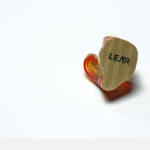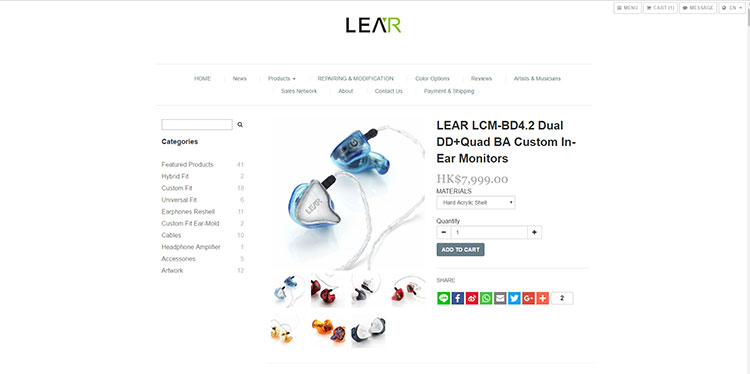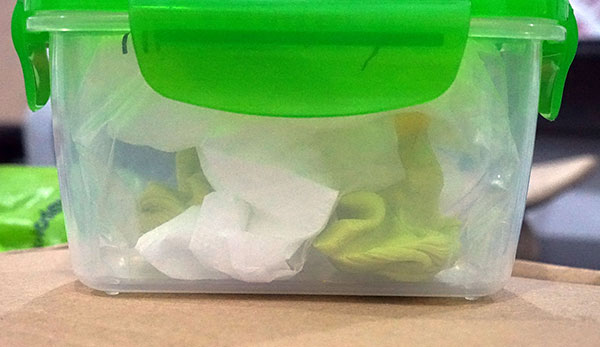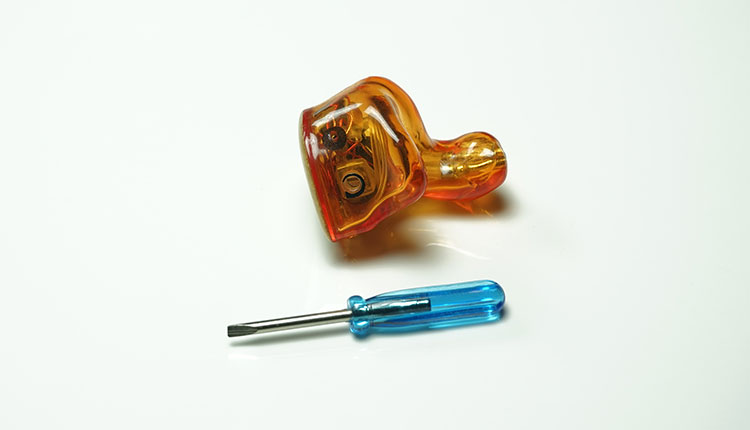The LCM-BD4.2 is a single dynamic driver quad BA custom monitor design from Hong Kong specialists LEAR. It is priced at HK$7,998.00.
Disclaimer: The LCM-BD4.2 sent to us is a sample in exchange for our honest opinion. We thank the team at Lear Audio for giving us this opportunity.
To read more about Lear products we reviewed previously on Headfonics, click here.
Note, this 2-page review follows our new scoring guidelines for 2020 which you can read up on here.
I must confess I am a bit of a latecomer to the Lear proposition having only met Tatco Ma and reviewed his gear starting the summer of 2015. However, I must say I have been impressed by their attempt to always do something a bit different.
We reviewed their unique Natrosound NS-U1 previously which attempted to produce a more realistic speaker-type sound with some interesting results and so again we were asked if we would like to review one of their flagship customs, the BD4.2 we, of course, said yes.
Another excuse to get something in orange at the very least! Lear being Lear though means the BD4.2 custom monitor is no “regular” CIEM. It has some quirks that mark it out, not so much as unique, but certainly, a value-add that makes listening to a CIEM a bit more varied.
What is the pitch?
Dual Dynamic Hybrid
So why call a custom monitor BD4.2? Well, the clue here is that it is directly related to how Lear has configured the drivers in the BD4.2 and that consists of 4 BA drivers and 2 dynamic drivers.
The driver configuration itself is a quad BA, two for the mids, two for the highs, and a set of dual 6mm micro-dynamic drivers for bass performance. Lear uses a 3-way crossover as well as four individual bore canals and an acoustic low pass filter to deliver the end product sound into your ear canal as accurately as possible.
I have reviewed plenty of hybrids with one dynamic driver and a few dual dynamic IEMs but I think this has to be the first time I have encountered a dual dynamic and hybrid BA design in one monitor. I can’t think of too many companies putting out hybrid designs like that, if at all, so in that respect, the BD4.2 might be totally unique.
Bass Control
The second key pitch of the BD4.2 is the inclusion of a manual side-mounted potentiometer for adjusting the bass on each shell. Now the concept of bass adjustment is not new in this business with JH Harvey, Vision Ears, and M-Fidelity all adding their own unique spin to ambiance and bass adjustment to their flagship products.
The Roxanne has it on an inline remote on their cables, the VE6XC and the SA-43 have combination switches on the side of the shells and all have either a subtle bass tilt in the case of the switches or a controllable bass volume/quantity such as the Roxanne and also in the case of the BD4.2.
The ability to control the bass output on a dual dynamic design though is very interesting. This could either be pure undiluted bass power or a big fat wet sponge hitting your face. Thankfully Lear has made the whole process user-adjustable rather than user presets and has described the ideal settings you can adjust the dial to for certain genres on their site, which are as follows:
- Studio monitor reference sound: 8~12 O’clock
- Pop and general taste: 12~3 O’clock
- Solid Deep and powerful bass: 3~4 O’clock
Pricing
Price-wise Lear has pitched the BD4.2 at HK$7999 which is around $1000 US and keeps in the attainable category for those looking for a serious custom monitor.
It is competing with the likes of Custom Arts Harmony 8, the UM Merlin/Miracle, the SA-43 from M-Fidelity and priced just only a few bucks higher than 64Audio V8 which starts at $999. In short, the Lear pricing is competitive and not out of line with the competition.
Ordering Process
The Lear website is a clean all-white affair with a rather simple buying process in terms of checking out. You can select the BD4.2 from the customs section and select either an acrylic hard shell or their new semi-hard shell option as well as quantity.
The BD4.2 page has a very long list of features and benefits but the key areas once you start shopping, the shells and faceplates, are rather far down the page.
I would personally prefer to see them closer to the top as part of the checkout and shopping process. You can select the faceplates and shells you want but only after you proceed to the checkout area. Again I think this should be before the checkout area so you do not have to memorize the previous page preferred plates and shells as well as being able to see mock combinations would help.
As ever my tip is to also visit the Facebook page of Lear. Much like other companies we have reviewed you get plenty of customers’ design choices and you can see live pics of the end product.
This normally helps to inspire me in terms of what plate matches what shell. Sure enough, I found my orange mana and matching woody faceplate and ordered promptly. That translated to a True Wood 004 faceplate and opaque orange hard acrylic shell.
This will be my third variation of orange and I wanted this one to have a bit of a light and breezy feel than the darker volcanic shades of the Merlin and the Harmony 8 combinations. I also picked a Westone type flush 2 pin socket for the cable due to my plethora of aftermarket 2-pin cables at the office but you can also grab an MMCX variation if that suits you better.
Impressions
Once ordered it is ear impression time and for Lear, the process is pretty much the same as almost every impressions process I have gone through before and to be honest that’s reassuring.
They do not, as of this time, have a 3D scanner process so it’s old school full ear clay impressions to the second bend using clay which has mild pressure build-up properties such as Dreve Otoform.
I believe also Lear does prefer a closed jaw impression over an open jaw. To be frank I have not been asked for an open jaw now in a few years so perhaps this method is being quietly dropped by a few customs companies.
It would be good though for Lear to have an FAQ section on the website citing how to go about doing impressions and sending them to their lab as more often than not the problems with units usually stem from bad impressions.
Packing and shipping should be secure but not too tight. By that, I mean placing the two impressions in an air-inflated zip lock bag with a single tissue separating them (cotton builds up the pressure and flattens the molds) and then picking up a cheap small hard food container and take it to your nearest courier.
The smaller the container the better. I found my best pricing was when I could get the containers into the padded FedEx packages. Process turnaround time is roughly 4-5 weeks depending on timing, can be shorter or longer depending on demand. Overall turnaround is consistent with most customs manufacturers, maybe even a touch faster.
Design
The BD4.2 final unit I received pretty much matched what I saw in their Facebook gallery in terms of look and feel. It’s slightly larger than a normal custom shell to accommodate the dual dynamic 6mm driver configuration, though smaller than say the Roxanne universal when placed side by side.
The shell and plates are well made with good levels of transparency though the wood faceplate is not as deep-set as other units I have worked with. The faceplate also does not feel as integrated into the shell creating a slight edge or corner where it joins the shell rather than a curved continuous feel.
The unit did have a few imperfections on the outside of the right ear shell but nothing terribly noticeable and only the odd tiny bubble here and there. The color matching was excellent though and the faceplates had a nice subtle grain just as I hoped they would look.
It is a step up on the workmanship of the SA-43 of M-Fidelity and Minerva UK’s Mi-Pro series but it is a step lower than Vision Ears, Rhines, and Custom Art which felt more polished and integrated as well as having zero imperfections.
4-Bore
The build is also a 4 bore design but by far these are the smallest bore openings I have seen on a custom unit to date and are the complete opposite to say the wide bore openings of Vision Ears and Rhines.
The irony is that the BD4.2 does come with a bore cleaning tool, the standard one at that you get with most CIEMs but the cleaning pick is much too big to insert into the bores to clean any wax out.
Given the small openings, it is almost a sure thing you will get some partial blockages with wax during continuous use over time and that will affect the sound quality. You will have to use a small pin instead very carefully to clean the BD4.2 bores.
I would certainly look to Lear to change up the cleaning kit in the BD4.2 to reflect the size of the bores and give us a tool that you can get inside the bores.
Fit & Seal
The Lear BD4.2 is designed as an over-ear fit and as such the final build unit was super accurate and easy to insert with no gaps. I have had a few customs that have gone to the tight side or the slightly loose side, though marginal in context, the BD4.2 was bang on the money for fit.
Even with the inclusion of the bass port for the dual dynamic setup the seal was better than the UM Merlin with excellent passive noise isolation. Doing an open and closed jaw movement the BD4.2 did have a very slight movement, more so than say the Custom Arts Harmony 8 silicone fit but didn’t want once break the seal.
The nozzle is a deep fit or pro-fit. I am not sure if you can get a relaxed-fitting shorter nozzle like you can with the UM Merlins but personally, I always recommend the long nozzle pro-fit for the best type of seal. It also minimizes any type of movement which is especially handy if you are using these on the go.
Due to the size of the shell, the BD4.2 does stick out a bit more than your normal custom monitor. Given the dual dynamic design though that is an acceptable compromise and it certainly does not feel like they are hanging out or weighing down on the outside. The pressure is good, the fit is excellent and the seal for a hybrid is above par.
Bass Adjusting
The side-mounted potentiometer for bass adjustment is in a recessed porthole at the back of each shell. It does not have any clear markings instead you have a small black accent around the hole that gets thicker the further round you go.
The thinnest part of the accent denotes the least amount of bass and the thickest the most amount of bass you can adjust for. On the website, Lear has rather strangely indicated you can also use the cleaning pick to tune the knob but in reality, you should really use the screwdriver that comes along as an additional accessory.
Cable & Accessories
The cable on the BD4.2 is their own Lear C2 cable which can be bought separately for HK$468.00 on their own website so it is no cheapie afterthought thrown in.
The C2 is an SPC tinsel cable specifically designed for longer endurance to metal fatigue whilst staying remaining very pliant and light. It is 1.3m in length and can be terminated in either 2-pin or MMCX depending on your preference.
The cable is terminated with a small straight gold plated 3.5mm black jack with the Lear logo on the side. Memory wire ear hooks are flexible and easy to work around the ear also. This cable is a nice relaxed fit overall without any annoying stiffness or memory retention and very low microphonics. Definitely one of the better CIEM stock cables out there.
Carry Case
The BD4.2 comes supplied with a rather nice chrome metal and very shiny round pillbox type carry case, a cleaning pick/brush and cloth, and a small screwdriver for adjusting the side-mounted potentiometer.
All of this is packed inside an understated but professional-looking black cardboard retail box with the Lear logo on the top and sides and “Custom Made In-Ear Monitors” on the side.
The chrome metal round pillbox has a nice green accented rubber interior to prevent any damages during transit and it an upgraded version of the plastic version you get with the cheaper NS-U1 universal IEM. It is a bit of a fingerprint magnet but once polished it looks very impressive. There is plenty of space also to house your BD4.2, a few cables if necessary, and the screwdriver.
Click on Page 2 below for Sound Impressions









